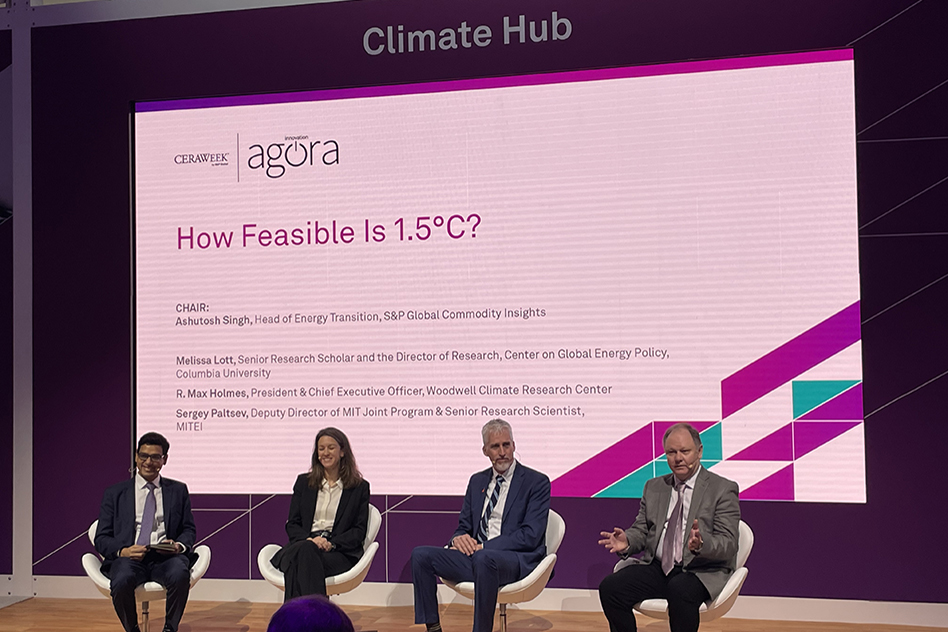
To meet the Paris Agreement’s long-term goal of keeping global climate change well below two degrees Celsius—and ideally below 1.5°C—the world needs to rapidly reduce carbon dioxide emissions and scale up low-carbon technologies. Global leaders, activists and some scientists say the 1.5°C target is still feasible. Though it just barely remains in play, this aspirational target is at least technically possible.
In a presentation on March 7 at CERAWeek, the world’s premier energy conference in Houston, Texas, Sergey Paltsev—deputy director of the MIT Joint Program on the Science and Policy of Global Change and a senior research scientist at the MIT Energy Initiative—discussed the need to accelerate actions by decision-makers seeking to lower CO2 and other greenhouse gas emissions.
There is a critical need to enhance global cooperation and apply an array of technology and policy options to reduce the risk of dangerous impacts of climate change, he said. With every additional increment of global warming, risks of climate extremes continue to grow. Conversely, with every reduction in global warming, these risks get smaller.
Paltsev delivered his presentation at a session entitled “How Feasible Is 1.5°C?”
Photo Credit: Avery Rose Pedell (S&P Global)

